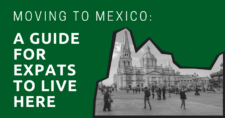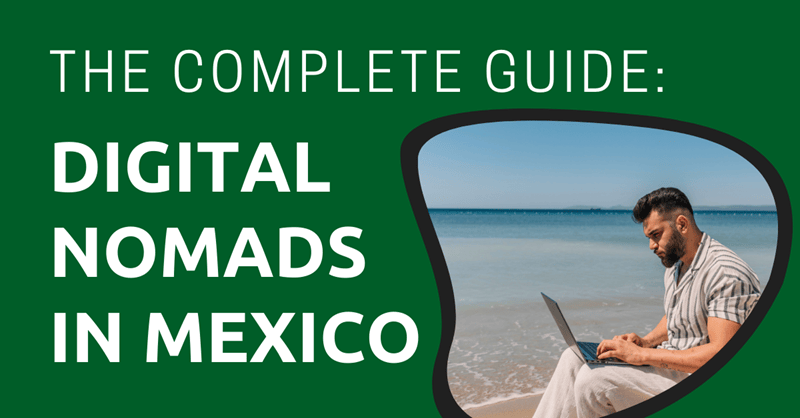
Mexico is one of the most popular destinations for digital nomads around the world for a reason. The country boasts a diverse landscape, rich culture, and affordable living to boot – what’s not to like?
In this guide, I’ll spill the beans on why Mexico isn’t just a vacation spot but also a top pick for your next remote work escapade. From the bustling urban jungles to laid-back beach vibes, discover exactly what makes Mexico so popular.
I will cover everything you need to know to move to Mexico as a digital nomad, including visas, the best places to live, the cost of living, finding accommodation, and much more.
Let’s dive in!
This article will take approximately 23 minutes to read. Don't have the time right now? No worries. You can email the ad-free version of the article to yourself and read it later!
Disclaimer: This article may include links to products or services offered by ExpatDen’s partners, which give us commissions when you click on them. Although this may influence how they appear in the text, we only recommend solutions that we would use in your situation. Read more in our Advertising Disclosure.
Contents
- Mexico Digital Nomad Visa
- Cost of Living for Digital Nomads in Mexico
- Best Places to Live in Mexico for Digital Nomads
- Finding Accommodation in Mexico
- Getting a Mexican SIM Card
- Finding Stable Internet
- Dealing with Finances
- Getting Healthcare as a Digital Nomad in Mexico
- Digital Nomad Community
- Finding Work as a Digital Nomad
- Is Mexico Safe for Digital Nomads?
- Is It Legal to Work in Mexico as a Digital Nomad?
- Do I Need to Pay Mexico Income Tax?
- Survival Spanish: Basic Spanish Phrases You Should Know
- Now, on to You
Mexico Digital Nomad Visa
Before you can step foot in Mexico, you’ll need to figure out what kind of visa to get.
In general, there are two options available to digital nomads in Mexico
Tourist Visa
While in the past, many digital nomads simply rocked up to Mexico with a tourist visa, this comes with two disadvantages:
- You can only stay up to 6 months.
- You are not legally allowed to work in Mexico, as this is a visa specifically intended for tourism.
Of course, many digital nomads in the past, and even today, simply arrive in Mexico with a tourist visa, but you should apply for the Temporary Resident Visa if you want to stay in Mexico for up to 4 years!
Temporary Resident Visa
Thankfully, Mexico has made this easier for remote workers with the Temporary Resident Visa for Remote Workers. While this is not an official digital nomad visa, it does come pretty close!
In order to qualify for the Temporary Resident Visa, you must meet at least one of the financial requirements, which are:
- Bank account showing at least $43,000 USD for the past 12 months.
- Income of at least $2,595 USD per month for the past 6 months (an additional $861 per dependent)
- Owner of Mexican property worth at least $346,000 USD
The advantages of the Mexico Temporary Resident Visa include:
- You can travel in and out of Mexico with no restrictions.
- You can access healthcare through Mexico’s public healthcare system, IMSS
- You can obtain a Mexican driver’s license.
- You may be eligible for permanent residency after four years.
Applying for the Temporary Resident Visa
If you meet the financial requirement, you are free to apply for the Temporary Resident Visa. Applying for this visa is fairly straightforward.
- Schedule a visa appointment at your nearest Mexican embassy or consulate.
- Gather all required documents, including passport, visa application form, passport-sized photo, proof of income or assets, and proof of health insurance.
- Attend the visa appointment with your documents. At this point, you will also need to pay the $40 USD visa fee.
- Get your permit. You may receive your permit on the spot, or you may need to wait a couple of weeks.
- Once you receive your permit, go to Mexico within 180 days
- After arrival in Mexico, you have 30 days to register with the National Immigration Institute (INM) and pay the $200 USD fee.
- Get your temporary residence card, which is valid for one year and can be renewed.
Cost of Living for Digital Nomads in Mexico
As a general rule, you should be able to survive in Mexico with $1,000 to $2,000 USD a month.
Here are the average costs of living in Mexico in USD at a glance:
- Accommodation: $500 to $800
- Groceries: $150 to $300 a month
- Restaurants: $10 to $20 for a restaurant meal; $1 to $4 for street food
- Activities: $4 to $30 for museums, cenotes, average tours
- Transportation: $0.30 to $5 local transport; $10 to $50 intercity buses
Of course, rent or accommodation will take up a big chunk of your living expenses when in Mexico.
Some digital nomads can get away with paying just $300 in rent, while others may splurge and live in more expensive cities like Playa del Carmen and Mexico City and pay $1,500+ in rent.
There is so much to eat in Mexico, so you absolutely cannot forget your food budget!
In terms of groceries, most digital nomads pay around $35 to $75 a week, depending on what you get. Eating out can be relatively cheap in Mexico, with food ranging from $2 to $20 on average.
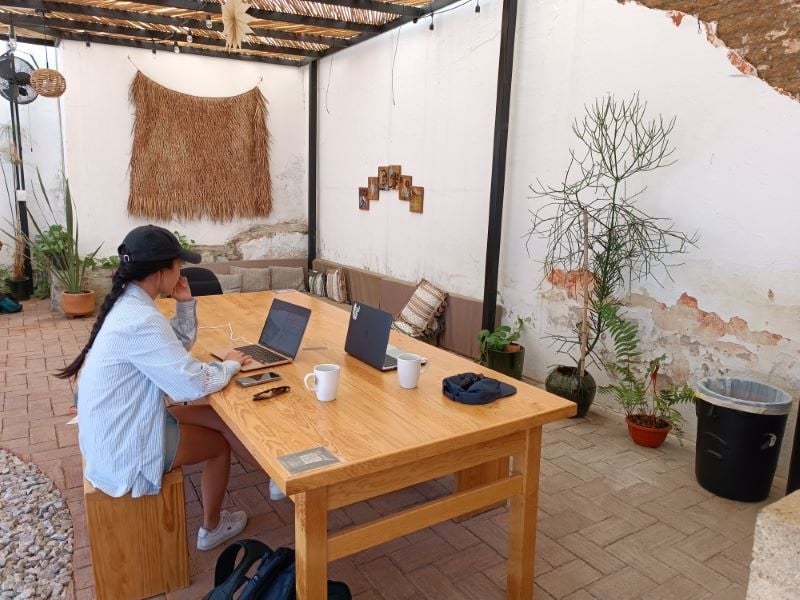
There’s plenty to do and see in Mexico, including seeing ruins, beaches, surrounding towns, and more. Activities can range from free (such as going to the beach) to $100+ for guided tours, but you’ll generally pay around $4 to $30.
Finally, transportation is relatively cheap in Mexico. The most affordable options are colectivos and public transport systems (the Mexican City metro is only 5 MXN ($0.30 USD) per ride!). Intercity buses are a bit more expensive but still reasonable at $10 to $50.
Best Places to Live in Mexico for Digital Nomads
Once you have your visa on hand, it’s time to figure out where to go in Mexico!
Mexico is a huge country, and you really can’t go wrong, as there are many beautiful cities and gorgeous towns.
Ultimately, what you pick will be up to you, but to help get you started, here are the 5 best places to live in Mexico for digital nomads.
Mexico City
Mexico City has long been the most popular spot for digital nomads, and it’s easy to see why. It’s a dynamic city with all the amenities you’ll need throughout your stay.
There’s plenty to eat, see, and experience. The city boasts modern infrastructure and diverse neighborhoods, and the city’s rich culture and history make it an even more interesting place to live.
Although Mexico City is dubbed a mega city due to its sheer size, it’s incredibly manageable to live in, thanks to the public transport system and walkable streets.
Digital nomads tend to live in certain areas of Mexico City, including Roma and Condesa.
Oaxaca
Within the Oaxaca region, there are two standout spots for digital nomads: Oaxaca City and Puerto Escondido.
Both are amazing destinations with plenty to do.
Oaxaca City is much smaller than Mexico City but still has plenty to offer. The city offers bustling traditional markets, amazing food, delicious chocolate, and countless restaurants and mezcal bars dotted all across the city.
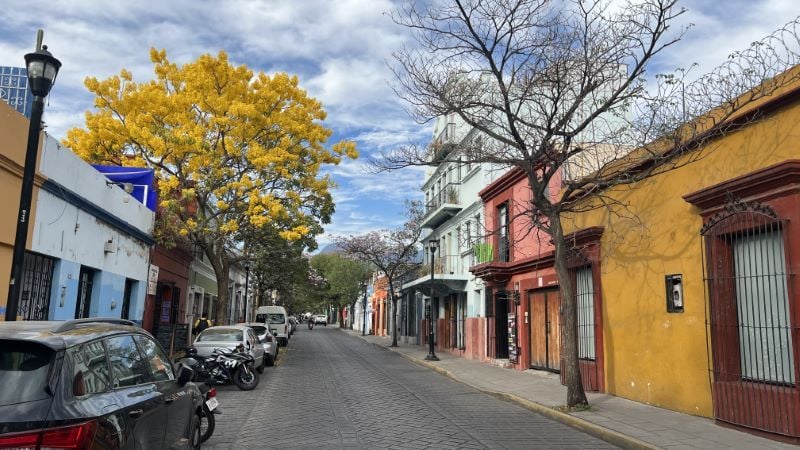
Plus, the walkability of the city makes it that much more liveable for any period of time!
On the other hand, if you’re looking for a more surfer destination with a laidback vibe, Puerto Escondido should be your pick!
Although smaller, Puerto Escondido also has its fair share of cafes, bars, and restaurants.
Playa del Carmen
Another incredibly popular destination for digital nomads is Playa del Carmen.
Once a sleepy fishing village, Playa del Carmen has attracted people from all over the world! Playa del Carmen has everything you’ll need as a digital nomad, boasting amenities such as coworking spaces, bars, cafes, and the fastest wifi outside of Mexico City!
The lifestyle here is fun and chill – a great combination for any beach destination.
This city is a hub for remote workers looking for a tropical work-life balance. Playa del Carmen’s proximity to other destinations, including Tulum, Cancun, and Cozumel, certainly doesn’t hurt!
Puerto Vallarta
Located in the state of Jalisco, Puerto Vallarta is a picturesque destination for digital nomads looking to relax.
This city offers everything—fun outdoor activities, amazing restaurants, cute cafes, tropical vibes, and safe neighborhoods, just to name a few.
Of course, as a beach destination, Puerto Vallarta also offers some gorgeous and fun beaches as well! Thanks to its high-speed internet connection, you won’t have to worry about upload or download speeds, and plenty of cafes and coworking spaces offer wi-fi for your working needs while you drink in the ocean views.
Furthermore, Puerto Vallarta’s airport connection is a huge advantage to living in this part of Mexico, offering connections to the rest of Mexico and the Americas.
Merida
How does a combination of big-city living with small-town charm sound to you?
If that sounds like your type of place, Merida might be an ideal digital nomad destination. It is a low-key city for digital nomads who appreciate culture while still boasting amenities like coworking spaces and cafes.
The city is in an ideal location on the Yucatan Peninsula as well, with easy access to other destinations such as Chichen Itza and Progreso.
The city’s colonial charm and amazing arts scene are just some of the big draws to Merida. The cost of living tends to be lower in Merida than in other Yucatan hotspots, which is a huge advantage!
Finding Accommodation in Mexico
The next step to starting your digital nomad adventure in Mexico is finding a place to live.
If you are simply looking for short-term accommodation for a month or less, your best bet is to look for a place to stay using travel accommodation sites, such as:
- Selina: The best option if you’re looking for a co-living space where you can easily meet other nomads.
- Booking: Booking offers many accommodation options, such as apartments, hotels, hostels, guesthouses, and more.
- Airbnb: A good option if you’re looking for apartment living. But keep in mind that there are many ethical concerns surrounding Airbnbs taking homes away from locals.
- Vrbo: An Airbnb alternative.
On the flip side, if you are planning on staying put in one place for at least a month or more, the best places to find mid-term to long-term accommodation are:
- Facebook: Check Facebook Marketplace in your area as well as Facebook groups dedicated to renters finding accommodation in your chosen city.
- Vivanuncios: A local rental listing site in Mexico. This is a great option if you’re looking for a 12-month lease.
- Word of mouth: If you have any friends or acquaintances living in your chosen city, reach out and ask if their landlords have any free apartments.
Getting a Mexican SIM Card
If you have an unlocked phone, you have two options when it comes to a Mexican SIM card:
- Get a physical Mexican SIM card.
- Get an eSIM.
If you choose the former option, when you first arrive in Mexico, you’ll need to buy a prepaid SIM.
You can find SIM cards (they are called chips in Spanish) at the Telcel or Movistar store nearest you. At the store, they will help you put in a Mexican SIM card and set up a prepaid plan.
Unless you are in a touristy area, you may need to speak Spanish or use a translator app.
Alternatively, you can get an eSIM, which is a much easier and convenient option.
With an eSIM, you can instantly get connected in Mexico (but keep in mind: no phone number!).
The best eSIMs are Airalo, Nomad, and Holafly.
Finding Stable Internet
Of course, as a digital nomad, it’s important to have a good internet connection.
Thankfully, Mexico has relatively stable internet, particularly in digital nomad hotspots like Mexico City and Playa del Carmen. In most cities, you should be able to find a stable internet pretty much anywhere, including in your own home.
But if your apartment’s internet speed is less than ideal, I recommend working in a coworking space or cafe instead.
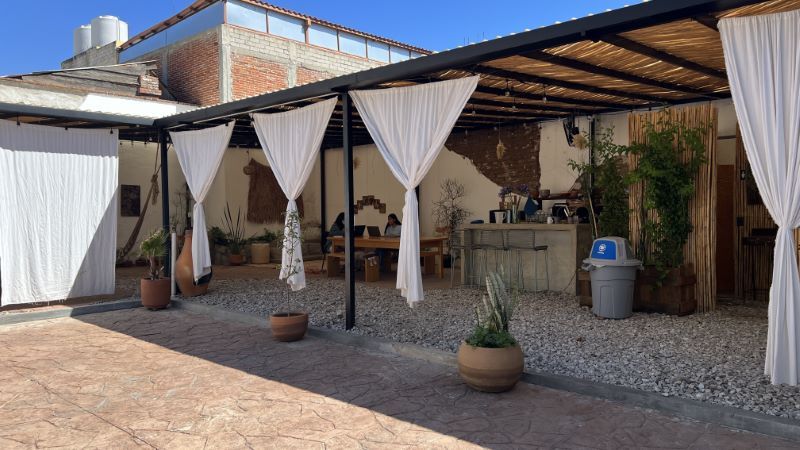
Coworking spaces, in particular, are made with remote workers in mind, so they’ll have reliable internet.
In fact, even in places like Tulum, where power outages are common, coworking spaces often have backup power to allow you to stay connected.
A quick note on internet safety: Most websites use encryption to protect your information, even when using public wifi. But if you’re worried bout internet safety, you can use a VPN to further protect your internet traffic.
Dealing with Finances
Let’s talk about money.
Whenever you move to a new country, it’s important to deal with all money matters as soon as possible. After all, how else are you going to spend your hard-earned money?
As a digital nomad, you will be earning money in a different currency and in an international bank account, so how do you go about spending money on a day-to-day basis in Mexico?
Related article: Mexico Money Guide: How to Manage Your Finances in Mexico
Opening a Bank Account in Mexico
There’s really no need to open a bank account in Mexico as a digital nomad.
You won’t be earning any money from a Mexican employer, so save yourself the headache and stick to your home bank account. You can easily take out cash from a local ATM and pay with your foreign card when you need.
How to Send Money to Mexico
If you need to send money to Mexico for whatever reason, such as paying a landlord, I recommend using Wise.
The best thing about Wise is that it doesn’t have any hidden fees. And the fees that it does charge are minimal and super competitive. Unlike most international money transfer services,
Wise does not add any markup to the exchange rate, which is generally where you lose the most money with other services.
Furthermore, Wise is incredibly intuitive and easy to use! I highly recommend it!
Besides using Wise, other methods to send money to Mexico include:
- International bank transfer: This is where you transfer money directly from your bank to an international bank account. There are usually fees charged by both banks as well as a currency exchange markup.
- Western Union: While a valid option for transferring money to Mexico, this option does tend to have much higher fees.
- PayPal: If the receiver has a PayPal account, you can transfer money to them using this option. While there isn’t always a fee for transferring money from USD, GBP, or CAD to MXN, there is a currency exchange markup.
Spending Money in Mexico
There are two main ways to spend money in Mexico:
- Cash
- Debit or credit card
Cash is still king in Mexico. Even if you frequent establishments that accept cards, there will be instances in which you will need to pay by cash.
For example, street food vendors (which you absolutely cannot miss out on!) and local shops will often only accept cash or may ask you to pay a fee to pay by card. To get cash, simply use any local ATM.
These ATMs may charge a small fee for taking out cash from your foreign card, but it is generally a negligible amount. I highly recommend opening a checking account that offers reimbursements for ATM fees. I use the Charles Schwab Investor Checking Account. With this account, I don’t pay any ATM fees! You have no idea how much of a relief it is to know that all my ATM fees will be reimbursed each month.
I also never go anywhere without my travel credit cards. When I am able to pay by card in Mexico, I either use my Capital Venture X or my Chase Sapphire Preferred, both of which offer tons of benefits and help me rack up points for future travels.
In addition to your personal debit or credit card, I recommend opening a travel bank account.
Check out Revolut, Wise, and Monzo—all three are great options. They have zero to minimal fees, even when exchanging your home currency for Mexican pesos.
Many Mexican establishments will accept these foreign cards without any issue.
Getting Healthcare as a Digital Nomad in Mexico
If you stay in Mexico on a tourist visa, you will not be able to use Mexico’s healthcare system. If you are staying in Mexico on a tourist visa, I highly recommend investing in travel insurance during your stay. SafetyWing is generally recommended.
That said, digital nomads who live in Mexico legally on a temporary resident visa can access the public healthcare system in Mexico as a digital nomad, but it works slightly differently than for other residents.
Generally, in order to access the IMSS system, you must be employed by a Mexican employer.
If you would like to have access to the public healthcare system, you can voluntarily contribute.
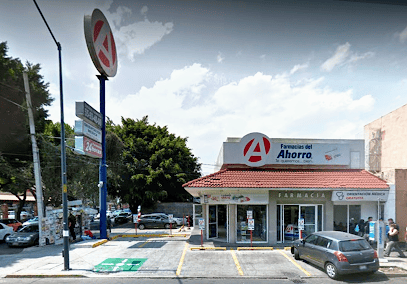
To apply for the IMSS system yourself, head over to your local IMSS office and fill out some forms. If you don’t speak Spanish, bring a translator!
As a resident, even if you are not covered by IMSS, you will be covered by INSABI, but INSABI medical care tends to be of a lower caliber with much longer wait times.
With all that said, however, as a digital nomad in Mexico, in order to apply for a Temporary Residency Visa in the first place, you must have valid health insurance for the duration of your stay.
So, you should already be covered for any medical emergencies if any were to occur. In other words, you don’t necessarily need access to IMSS.
In fact, most digital nomads prefer going to private hospitals and doctors, as they can provide care in English and tend to have better facilities and little-to-no waiting times.
Related article: Health Insurance in Mexico for Expats: What You Need to Know
Digital Nomad Community
Wherever you go as a digital nomad, it is super important to find a community around you.
Don’t worry if you’ve just arrived in Mexico and you’re not sure how to make friends! Mexico is one of the most popular destinations for digital nomads, so you’ll easily be able to find like-minded people in your chosen city!
One of the easiest ways to find a digital nomad community is to join Facebook groups.
You should be able to find Facebook groups in your chosen city specifically geared towards digital nomads and/or expats in Mexico. Here are a few of the groups that I have used during my time in Mexico.
- Digital Nomads Mexico Facebook Group
- Foreigners and Expats in Mexico City
- Digital Nomads Puerto Escondido
- Digital Nomads Playa Del Carmen and Tulum
I also recommend going to a coworking space. Many coworking spaces have events throughout the week for other digital nomads to meet each other and network. Here are a few awesome coworking spaces for meeting other digital nomads:
- The Nest Playa Del Carmen
- Co-Madre (CDMX)
- PUBLICO (CDMX)
- Selina (a coworking/coliving space found all over Mexico)
Quick note: While finding a good digital nomad community is important, I would like to stress that it is also important to leave your bubble and interact with locals in the community. After all, you are a guest in their community, and it is only fair that you contribute to the community in some way or form as well. Talk to locals, make friends with locals, and support locals! Don’t just stay in your digital nomad bubble!
Finding Work as a Digital Nomad
If you don’t have a digital nomad job yet, before you can live in Mexico as a digital nomad, you will need to find some work. One of the best ways to find work as a digital nomad is through freelancing platforms like Upwork and Fiverr. Depending on your skills, you should be able to find a variety of jobs on these platforms to fund your life in Mexico.
Alternatively, you can apply for a full-time employed remote position. You can find remote work through platforms like LinkedIn and Indeed. Just filter your search for remote positions only!
Is Mexico Safe for Digital Nomads?
Mexico gets a bad rap when it comes to safety, and it is pretty difficult to escape the jarring headlines, especially if you live in the USA.
That said, most regions and cities of Mexico are likely much safer than you might think. In fact, cities like Playa Del Carmen, Merida, Oaxaca, Mexico City, and Puerto Vallarta have violent crime rates comparable to some US cities!
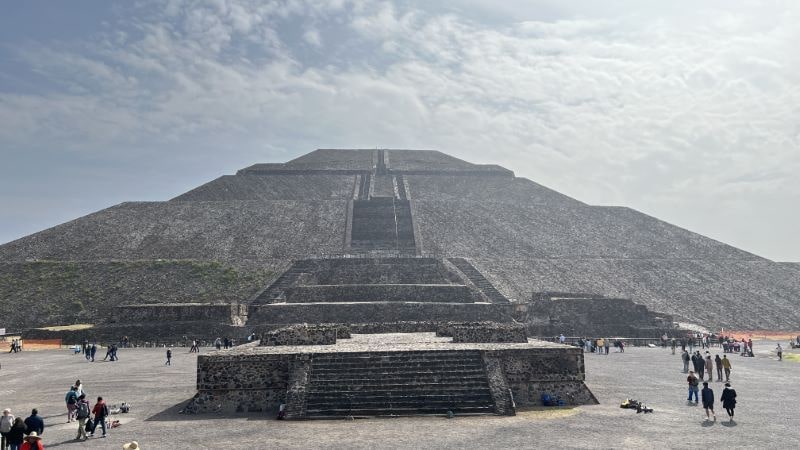
Of course, some regions of Mexico suffer from extremely high crime rates, and some towns along the US border have the highest murder rates in the world.
But, don’t let this deter you from exploring the beautiful country and making Mexico your digital nomad home!
Stay away from areas with lots of crime and be street smart, and you should be just fine.
Is It Legal to Work in Mexico as a Digital Nomad?
This depends on your visa situation. The reality is that many digital nomads come to Mexico on a tourist visa. This may surprise most nomads, but this is technically illegal. However, this is not enforced, so most nomads who stay in Mexico for fewer than 6 months tend to simply stay with a tourist visa on arrival.
On the other hand, if you are in Mexico with the Temporary Resident Visa that allows remote working, then yes, it is entirely legal to work in Mexico as a digital nomad.
In both cases, working for a Mexican company or employer is absolutely forbidden.
Do I Need to Pay Mexico Income Tax?
If you are legally living in Mexico on a Temporary Resident Visa and spend more than 183 days in Mexico, you will be considered a tax resident. Mexican tax residency means that the country will require you to pay taxes on your worldwide income. That said, many digital nomads do not stay in Mexico for more than 183 days, in which they will not be obligated to pay income taxes to the Mexican government.
Survival Spanish: Basic Spanish Phrases You Should Know
To really thrive in Mexico, you should have a decent level of Spanish. While you don’t have to be fluent, it helps to be able to get around and get your point across, as not everyone you come across will be able to speak English. Even if you do tend to rely on Google Translate for most interactions, I highly recommend learning some Spanish – it’s polite and will make your life in Mexico so much easier!
Here are some basic Spanish phrases you should know to get you started:
- Hola – Hello
- Me llamo _____ – My name is _____
- ¿Cómo te llamas? – What is your name?
- Buenos días – Good morning
- Buenas tardes – Good afternoon
- Buenas noches – Good evening / Good night
- Gracias – Thank you
- Por favor – Please
- Disculpe – Excuse me!
- No entiendo – I don’t understand
- No hablo español – I don’t speak Spanish
- ¿Habla inglés? – Do you speak English?
- ¿Puede repetir? – Can you repeat?
- ¿Qué significa _____? – What does _____ mean?
Interested in learning more Spanish? Look for Spanish schools in your chosen area, or try Duolingo!
Now, on to You
Whether you choose the massive but charming Mexico City or the coastal serenity of Playa Del Carmen, Mexico is an amazing destination for digital nomads.
Moving to any country, even if it’s right by your doorstep, can be a daunting task, but with this ultimate guide under your belt, your move should be seamless and exciting! So, grab your laptop and your suitcase, and get ready for a new adventure.



